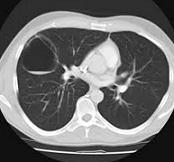Latin is where we find the etymological origin of the word congenital. Specifically, it derives from "congenitus", which is the result of the sum of two clearly delimited components:
-The prefix «con-«, which can be translated as «together».
-The word "genitus", which is synonymous with "begotten."
The term congenital is used to describe what is born with oneself . This adjective is also used with reference to what originates together with something.
 In the field of medicine , it is indicated that a condition or trait is congenital if it was acquired during intrauterine development . This means that, at the time of birth, the person already has the condition or trait in question.
In the field of medicine , it is indicated that a condition or trait is congenital if it was acquired during intrauterine development . This means that, at the time of birth, the person already has the condition or trait in question.
Congenital can be inherited , acquired by an infection or developed by the action of a chemical or physical agent . Congenital diseases , as can be seen, are very varied and can have different severities.
Suppose that a woman , during her pregnancy, was in contact with agrochemical products. Once she gave birth, her son had malformations in his legs. These malformations are congenital: they occurred in the fetal period due to the action of chemical substances. That is why the child, at birth, already suffered from the disorder.
There are numerous so-called congenital diseases that exist. However, in this case, it is worth highlighting some such as the following:
-Poland syndrome, which in addition to being congenital is classified as a rare disease. It was discovered in the first half of the 19th century by Alfred Poland and affects muscle development. In more than half of the cases the alterations fall on the right hemisphere.
-Elevated scapula, which also responds to the name of Sprengel's deformity. It is a rare congenital pathology that can be detected during pregnancy. It is characterized because the person who suffers from it has an abnormal position regarding the chest and also the neck of the shoulder blade. Specifically, the scapula, as its name indicates, has a fairly elevated position.
-Tritanomaly, which is a congenital disease that is characterized because it affects the colors that the person sees. It is a very rare variant of what color blindness is and causes the person in question to have problems differentiating what is blue from yellow and vice versa.
Ho Kaufman Mcalister Syndrome or bronchopulmonary sequestration are other congenital diseases.
Congenital malformations , therefore, are anatomical alterations that occur in the intrauterine stage. These malformations can occur in the extremities, organs or systems.
Congenital myopathy , on the other hand, is a genetic disorder that causes complications in muscle function. This congenital problem can be reflected in muscle weakness, digestive problems and breathing difficulties, to name a few possibilities.
In a similar sense, congenital heart diseases are heart problems that occur before the time of birth. In some cases, congenital heart diseases are only detected in adulthood since, in the previous years, they did not show any symptoms .
